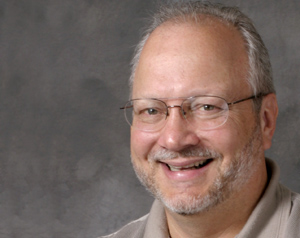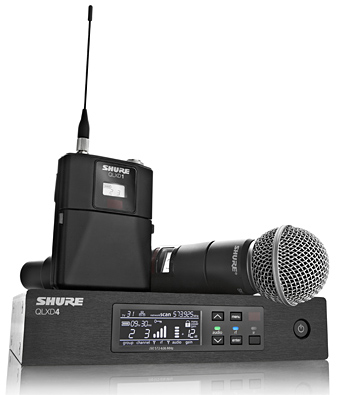Sounds Good to Me: A Q&A With Shure’s Michael Pettersen

Michael Pettersen
ALEXANDRIA, VA.—Anyone who has been in the television industry for more than a few months knows that getting good audio is much harder than getting good video. And poor audio will make even the best-looking video seem like the overall production is amateurish.
So it’s time to take a look at audio and examine the state-of-the-art in microphones. Good audio begins with a quality mic and the right technique, but there are always technical advances that can mean new mic designs and operating procedures.
Broadcast Engineering Extra talked with Michael Pettersen, the director of product technical support for Shure. Shure is one of the oldest and most-trusted names in the microphone business—for example, Shure supplies the two SM57 microphones used by the U.S. president at press conferences.
In addition to being Shure’s director of product technical support, Pettersen is also the company’s corporate historian. Throughout his 38 years of service with Shure, Pettersen has held multiple positions within sales, marketing and engineering. He created the Shure Consultant Liaison Program and co-authored the two-volume, 400-page Shure history book published in 2000.
BE Extra: Are there any new active technologies for improving the directionality of microphones? How do these work?
Pettersen: Yes. An array of multiple mics controlled by digital signal processing can produce different pick up patterns. These pickup patterns can be electronically aimed at desired sound sources and away from noise sources. Typical applications that could benefit from array mics are video conferences and talk shows.
Get the TV Tech Newsletter
The professional video industry's #1 source for news, trends and product and tech information. Sign up below.
BE Extra: Lavalier mics are available in both directional and omnidirectional varieties. When and why should one be chosen over another?
Pettersen: It is true that a directional lavalier will pick up less background noise than a similar-quality omnidirectional lavalier. However, an omni lavalier has these advantages over the directional lavalier: Less wind noise, no bass build up due to proximity effect, reduced handling and vibration noise, works no matter how it is oriented toward the talker’s mouth, impossible to talk outside of the polar pattern, and less P-popping from plosive sounds.
BE Extra: Often when listening to a news story on television, the reporter’s voice differs dramatically between when speaking on camera and off camera—clearly two different mics are used. What do you advise a broadcaster regarding this situation? Always use the best mic for the application? Or simply use the same quality mic to get both the on-camera and off-camera audio?
Pettersen: These differences are primarily a result of the acoustical conditions. Voice-overs are created in an acoustically treated (“dead”) room by using a mic optimized for an announcer. Meanwhile, the live broadcast is “on location,” with a mic optimized to minimize wind noise and handling noise; and the “location” is not acoustically treated. Place the location microphone in the acoustically treated room, and it will sound quite different because of the room acoustics. Choose the best mic for the job and accept the acoustical results.

The Shure QLXD124 is a digital wireless mic system.
BE Extra: There are a lot of unanswered questions regarding the upcoming spectrum auction, including its effect on wireless microphone systems. If a video producer needs to buy a wireless system today, are there any features/specs that will future-proof the product? What should the producer look for?
Pettersen: Unfortunately, no wireless system can be 100-percent future-proof, as the FCC is in control of the spectrum situation, not wireless mic manufacturers. However, some good advice for purchasing wireless systems in 2015 is to procure a digital UHF system that operates in the range of 470 MHz to 600 MHz band. And, a wireless system that offers battery rechargeability is a plus. A digital wireless system in this band should be useable for many years.
BE Extra: How many wireless systems can be running in one location at one time? How might this be affected by the spectrum auction?
Pettersen: The number of systems that can be used at one time is dependent on the wireless series selected. Shure offers many different systems at different price points, which results in a variance of this capability. As an example, the Shure ULX-D Series, in High Density mode, can support up to 100 systems in one venue. At this time, it is impossible to predict the impact the spectrum auction will have on this aspect of wireless use, but reduced available wireless spectrum may indeed reduce the number of systems that can operate simultaneously.
BE Extra: What else should we know about either wired or wireless mics? Is there new technology coming that promises to improve the quality/performance of microphones?
Pettersen: The audio quality of wired mics has been excellent dating back to the 1930s. I would say that the audio quality of microphones has been evolutionary, not revolutionary! Dynamic, condenser and ribbon transducer technologies are well established and will continue to be in use for many decades. In the wireless realm, the shift from analog to digital has been a major innovation, allowing for better audio quality, more simultaneous systems in operation and precise control of wireless parameters using computer networks.
Bob Kovacs is the former Technology Editor for TV Tech and editor of Government Video. He is a long-time video engineer and writer, who now works as a video producer for a government agency. In 2020, Kovacs won several awards as the editor and co-producer of the short film "Rendezvous."

